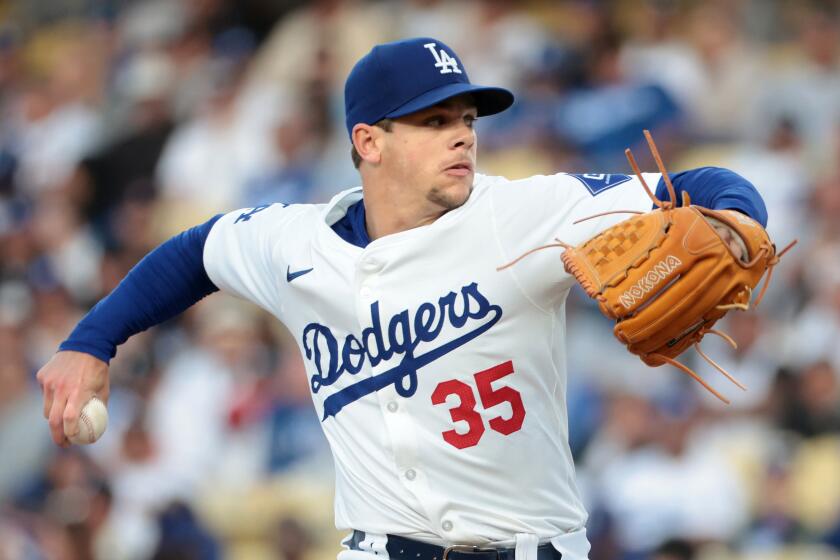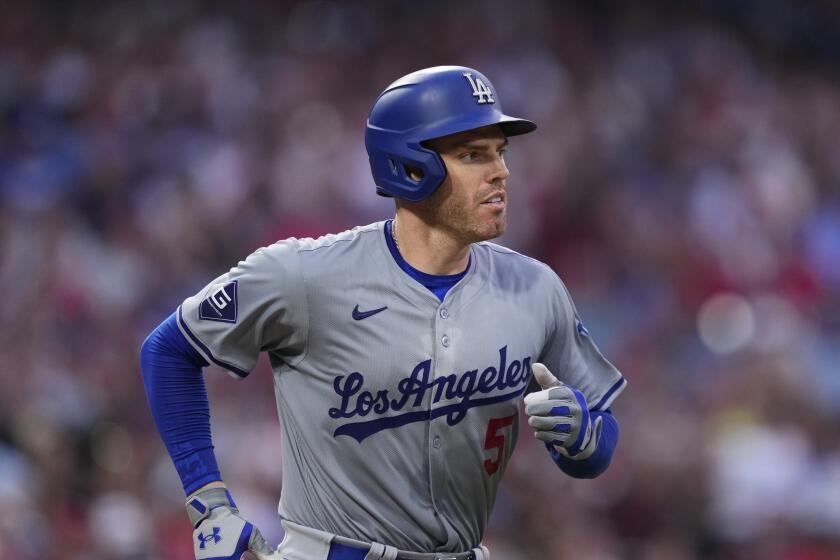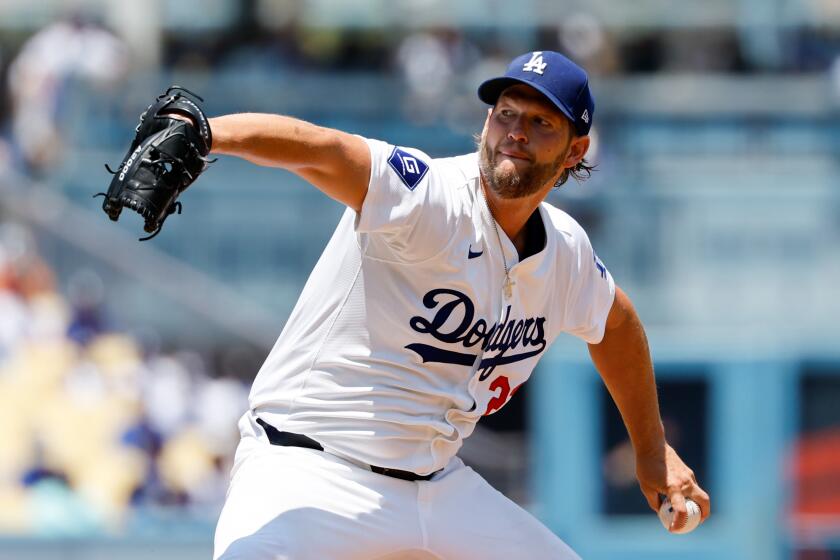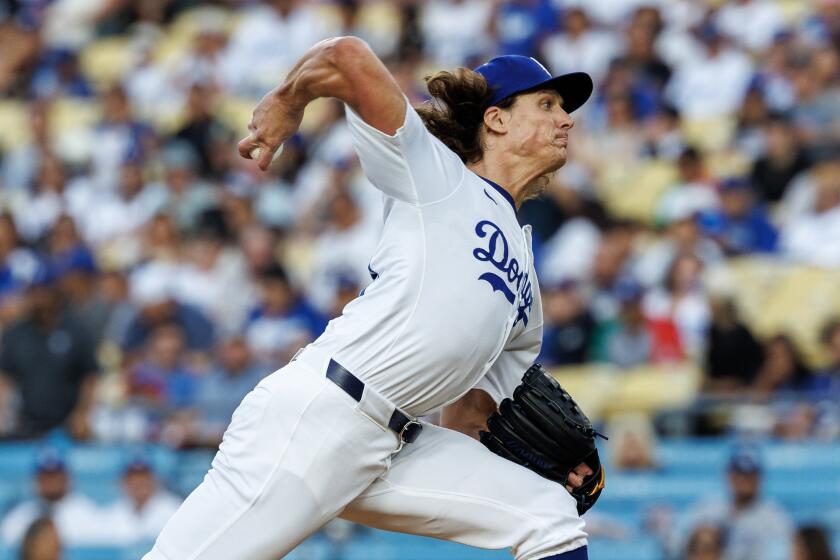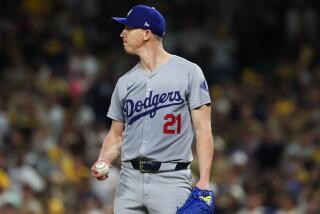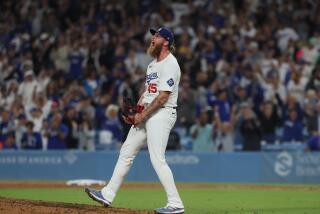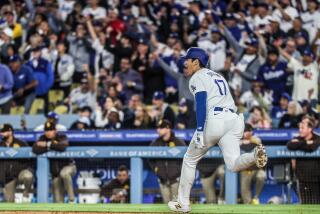Dodgers need Gavin Stone to rebound from swoon that helped seal loss to Astros
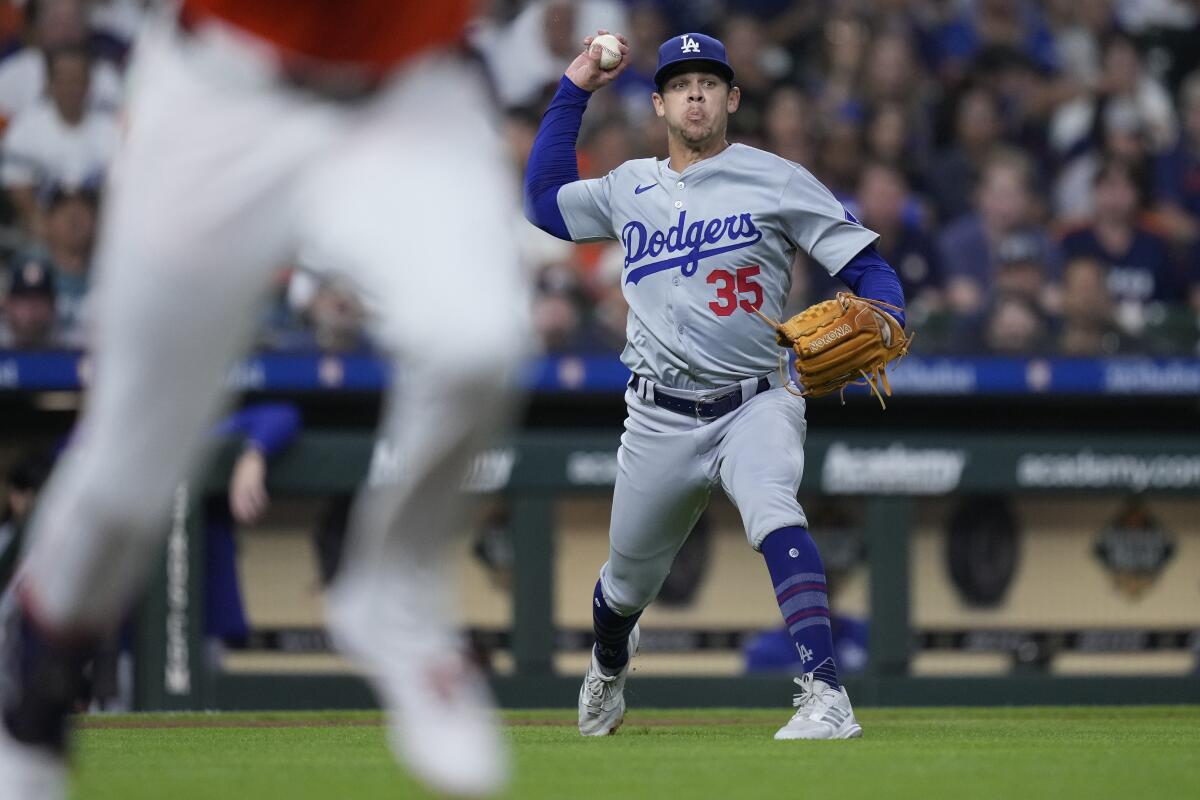
- Share via
HOUSTON — There is a very real chance that Gavin Stone could be the Dodgers’ No. 2 starter when the playoffs begin in a couple of months.
If so, the Dodgers will need him to pitch much better than he did Friday night.
In a 5-0 loss at Minute Maid Park, Stone got knocked around by a resurgent Houston Astros club and its star-studded, high-powered offense, giving up four runs in six innings to continue a July slide during what had been a strong rookie season for the 25-year-old right-hander.
Prior to July, Stone had a 2.73 earned-run average, was showing rapid improvement with a new pitch mix, and had started to emerge as a potential weapon to be relied upon in a potential postseason run.
As Dodgers right-hander Gavin Stone has settled in as a starter this season, he is reminding the Dodgers of Orel Hershiser both in approach and in his competitiveness.
Lately, however, Stone has come back to earth. Friday was the third time in four starts that he gave up four or more runs. He also struggled to avoid hard contact, matching a season high with nine hits given up, or rack up enough strikeouts to escape repeated jams, recording just three for a fourth straight start.
“There are some opportunities where you just have to make better pitches,” Stone said. “That’s pretty much it, just making better pitches in certain situations.”
After a clean first inning, Stone ran into trouble in the second. He gave up a leadoff single. He walked a batter with two outs. Then, after falling behind 3-and-1 to Joey Loperfido, he gave up an RBI single on a line drive to left.
The Astros heated up from there.
Alex Bregman hammered a down-the-middle fastball in the third inning, sending a no-doubt homer over the left-field Crawford Boxes. In the fourth, Jon Singleton also went deep, flipping his bat with a two-handed toss after belting a two-run home run to the second deck in right field.
First baseman Freddie Freeman, who had started every game this season, returned to Los Angeles to be with family after son spent time in a hospital.
“I just left two pitches over the plate,” Stone said, “and they put good swings on it.”
Stone avoided any further damage from there, but still saw his season ERA rise to 3.34, the highest it has been since late May.
Has the league started adjusting to the former fifth-round draft pick?

“Yeah,” Stone said. “I think that’s what makes it fun.”
Manager Dave Roberts concurred.
“The more you make starts, the more information teams are gonna have, a better idea [of how] to prepare,” he said. “I thought the stuff was good. He touched 98 [mph] tonight. But just a little bit getting behind hitters. The slider to some righties was just off [the plate] for either chase or called third strikes. And the changeup, they just seemed like they were spoiling it, or it was a ball in play.”
The Dodgers offered little support offensively, especially after Freddie Freeman was scratched from the lineup to fly back to L.A. to be with his family. His youngest son, 3-year-old Maximus, was in the hospital this week according to an Instagram post from Freeman’s wife, Chelsea. Freeman was placed on the family emergency list Saturday.
Shohei Ohtani led off the game with a double. After that, the Dodgers didn’t have another hit until the sixth inning, when they left the bases loaded.
In the seventh, a mental miscue cost them a run, when Kiké Hernández was tagged out at second base before Miguel Vargas could score from third on an infield single.
Clayton Kershaw appeared to be in trouble early in his season debut Thursday following offseason surgery, but he worked his way out of a jam.
“That’s something he won’t do again,” Roberts said of Vargas, who was jogging to the plate while watching the play unfold. “We talked about that.”
In all, the Dodgers managed just six hits, struck out 15 times and finished one for nine with runners in scoring position.
“It’s a challenge,” Roberts said of the team’s short-handed lineup, which also remains without Mookie Betts because of a broken hand. “You have the guys you have, and you have to believe they’re gonna find a way to scratch some runs across.”
Stone’s performance, however, was most troubling for a Dodgers team that remains without Yoshinobu Yamamoto, Walker Buehler and Bobby Miller; and that is approaching Tuesday’s trade deadline with few obvious pitching upgrades available to pursue on the trade market.
The team has had interest in Garrett Crochet, but his workload concerns (and reported preference for a contract extension if he is dealt by the Chicago White Sox) have added obstacles to those negotiations.
Cheaper alternatives, like past Dodgers trade target Jack Flaherty, still could be added. But finding a clear upgrade over Stone, who has served as the de facto No. 2 in the rotation since Yamamoto’s shoulder injury in June, will be no easy task.
Even if the Dodgers add an arm, Stone still could play an important role in a potential postseason run.
The Dodgers need Tyler Glasnow to deliver more outings like his performance Wednesday during a home loss to the San Francisco Giants.
The rookie still leads the team in wins (nine), is second in innings pitched (107-2/3) and, after Tyler Glasnow, has been the next-most dependable starter.
The first three months of the season showcased his potential and stoked hopes that he could be a postseason difference-maker for the Dodgers’ banged-up pitching staff. Roberts also took solace in the fact Stone completed six innings Friday, the longest outing by a Dodgers starter since July 5.
“Like I told him in the dugout, I’m sure he’s frustrated with giving up runs,” Roberts said. “But for a young pitcher to be able to not give away the farm and keep us relatively in the ballgame and to not go four innings but to go six innings — that’s a positive.”
Yet, Friday offered a more ominous reminder too — about the risks of asking too much from a young pitcher, and the growing pains Stone continues to face in his bid to become an legitimate front-line option.
“It’s a learning curve,” Roberts said. “He’s got to continue to grow and get better. When you’re learning on the fly, it’s not easy to do.”

More to Read
Are you a true-blue fan?
Get our Dodgers Dugout newsletter for insights, news and much more.
You may occasionally receive promotional content from the Los Angeles Times.

